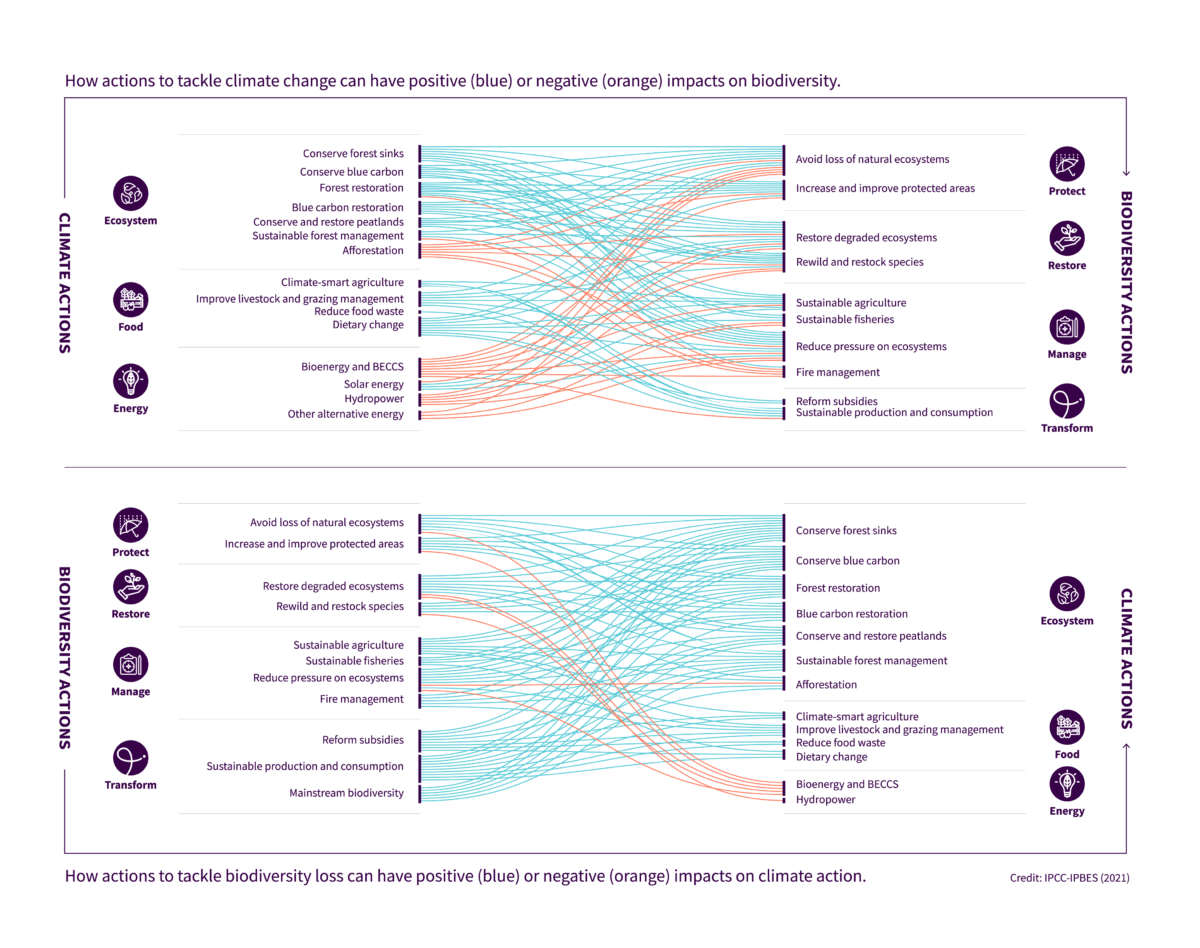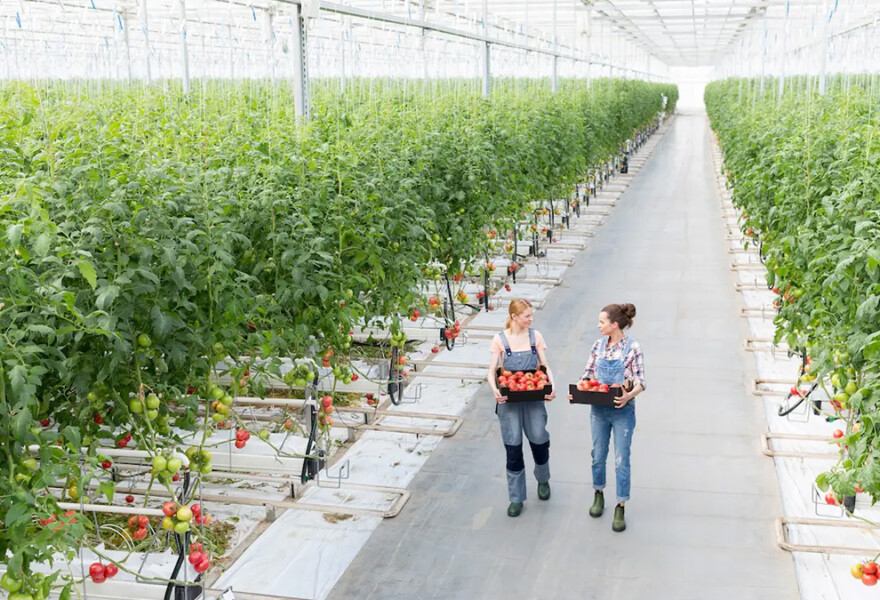In brief:
- Food and beverage companies can build resilience and make progress on their climate goals by integrating nature into their sustainability strategies.
- Nature and climate action can bring mutually beneficial outcomes. By prioritizing nature, companies can foster synergies that enhance climate efforts, such as adopting regenerative agriculture practices to improve soil health, reduce emissions and stabilize (or even increase) land productivity.
- Integrating nature and climate strategies provides a unified, comprehensive sustainability framework that streamlines efforts, offers tangible KPIs and aligns diverse actionstoward common environmental and business goals.
If you’ve been in corporate sustainability awhile, you’ve probably noticed a recent addition to the lexicon. From the conference circuit to annual reports, everyone’s talking about “nature”. This reflects a push to expand sustainability strategies, traditionally focused solely on climate, to incorporate the critical role of nature preservation and regeneration. The pursuit of a “nature-positive” economy is gaining momentum as recognition of the interconnectedness between planetary health and business resilience grows. Yet in the food and beverage industry, awareness hasn’t yet translated into sufficient action.
For food and beverage companies, adopting a nature strategy can not only help build a more resilient business model, but also support the achievement of climate goals. The food and beverage industry contributes to nature degradation more than any other sector, while also relying significantly on the ecosystem services it provides and therefore suffering the most from theconsequences. Thus the industry has a lot to lose, but even more to gain by halting and reversing nature loss.
Some companies may have already initiated this journey through taking nature-supportive actions as they work toward their climate goals. Yet a more intentional focus on nature will increase long-term resilience in the face of climate challenges and ecosystem collapse.
Investing in nature is a prerequisite for business preservation
Beyond a compliance exercise, food and beverage companies should view nature preservation as a strategic imperative to business survival. As spotlighted in Quantis’ 2024 “Recipe for Transformation” report, the industry could lose around $150 billion – or 7% of its value – by 2030 if companies fail to take action.
The degradation of ecosystem services – through actions such as land use change and the oversaturation of nitrogen and phosphorus in soils – has rendered the conventional ever-expanding, resource-depleting agricultural model unsustainable for both business and the planet. This model is also a large driver of nature loss, resulting in some of the first climate-driven extinctions in plants and animals.
Consequently, physical risks such as extreme weather events, soil degradation and water scarcity can severely disrupt supply chains and lead to significant financial losses.Nature degradation can result in stagnated or lower quality yields driven by water shortages, heat waves and the spreading of disease, with companies short sightedly relying on an increase of land and water use to maintain productivity.
Transition risks, on the other hand, arise from the shift towards a nature-positive economy, including changes in regulations and market preferences. Ignoring these risks can result in increased operational costs, supply chain disruptions and loss of market share.
Despite the real threats awaiting those that move too slowly, many companies find the prospect of incorporating nature into their business strategy daunting. Integrating climate priorities has proven challenging for an industry heavily driven by scope 3 emissions, and nature represents yet another challenge on top of existing climate efforts. But adopting an ambitious nature strategy shouldn’t be seen as a separate path to climate action. Instead, climate should be integrated with nature rather than placed next to it. The recognition that investing in nature is an essential safeguard for the future of food production is long overdue.
Unveiling the synergy between nature, climate and business goals
One of the key challenges companies face is the perceived dichotomy between nature and climate goals. However, the reality is that these objectives aren’t mutually exclusive; they’re two sides of the same coin. In fact, the Kunming-Montreal Global Biodiversity Frameworkexplicitly includes a focus on minimizing the impacts of biodiversity loss through climate action in its eighth target. The food and beverage industry often underestimates the inherent connection between their climate efforts and nature-supportive action.
Having a holistic nature strategy streamlines sustainability efforts, giving overwhelmed (and often under-resourced) teams a greater sense of focus through a single framework, aligning diverse actions toward a common goal.

The above graphic from IPBES shows synergies between climate and nature-supportive solutions associated with the food and beverage industry (with a few exceptions). By adopting an integrated sustainability strategy centered around nature, companies can uncover mutually beneficial activities that serve both nature and climate goals.
The adoption of regenerative agriculture practices is one example that has proven to be a win-win for both nature and climate objectives. Studies reveal that such practices contribute to healthy soils, concurrently cutting emissions and reducing the need for inputs (such as fertilizer). Investing in soil health also restores local water cycles and enhances the soil’s capacity to sequester carbon.
Integrating nature to streamline sustainability efforts and enhance KPIs
Fortunately, adopting a nature strategy doesn’t require starting from scratch, especially for companies that already have a robust climate strategy or practice regenerative agriculture. While measuring the nature impacts and dependencies of a company’s value chain may require additional metrics compared to climate, companies can typically leverage existing tactics to assess their nature impacts.
Nature-specific KPIs add value to the sustainability strategy as well. They typically utilize much of the same input information as climate metrics, yet nature-based KPIs offer a more granular view into specific impacts and dependencies, enabling companies to gain deeper insights into their environmental footprint and associated risks. This holistic approach allows companies to track tangible progress on critical topics such as land and water use, which are directly linked to nature preservation.
While climate progress often contributes to global trends, nature-supportive KPIs provide a more direct, localized understanding of a business’s environmental performance and can help avoid impact shifting. The synergies that are unlocked through integrating nature-based metrics allow companies to streamline sustainability efforts and strengthen resilience to environmental risks and uncertainties. And concrete examples of this are already beginning to emerge. Several food companies that adopted net-zero roadmaps a few years ago have now realized that without accelerating regenerative agriculture and nature strategies, they’re unlikely to achieve their climate goals.
As companies realize that climate and nature are collaborators in the journey toward a more sustainable, resilient market, acting quickly to integrate them will pay off. Tangible progress can be made on diverse environmental topics such as land, water and biodiversity, while simultaneously advancing climate goals.Companies that embrace this synergy through innovation and industry collaboration can position themselves as competitive players and guarantee the resilience of their supply.




